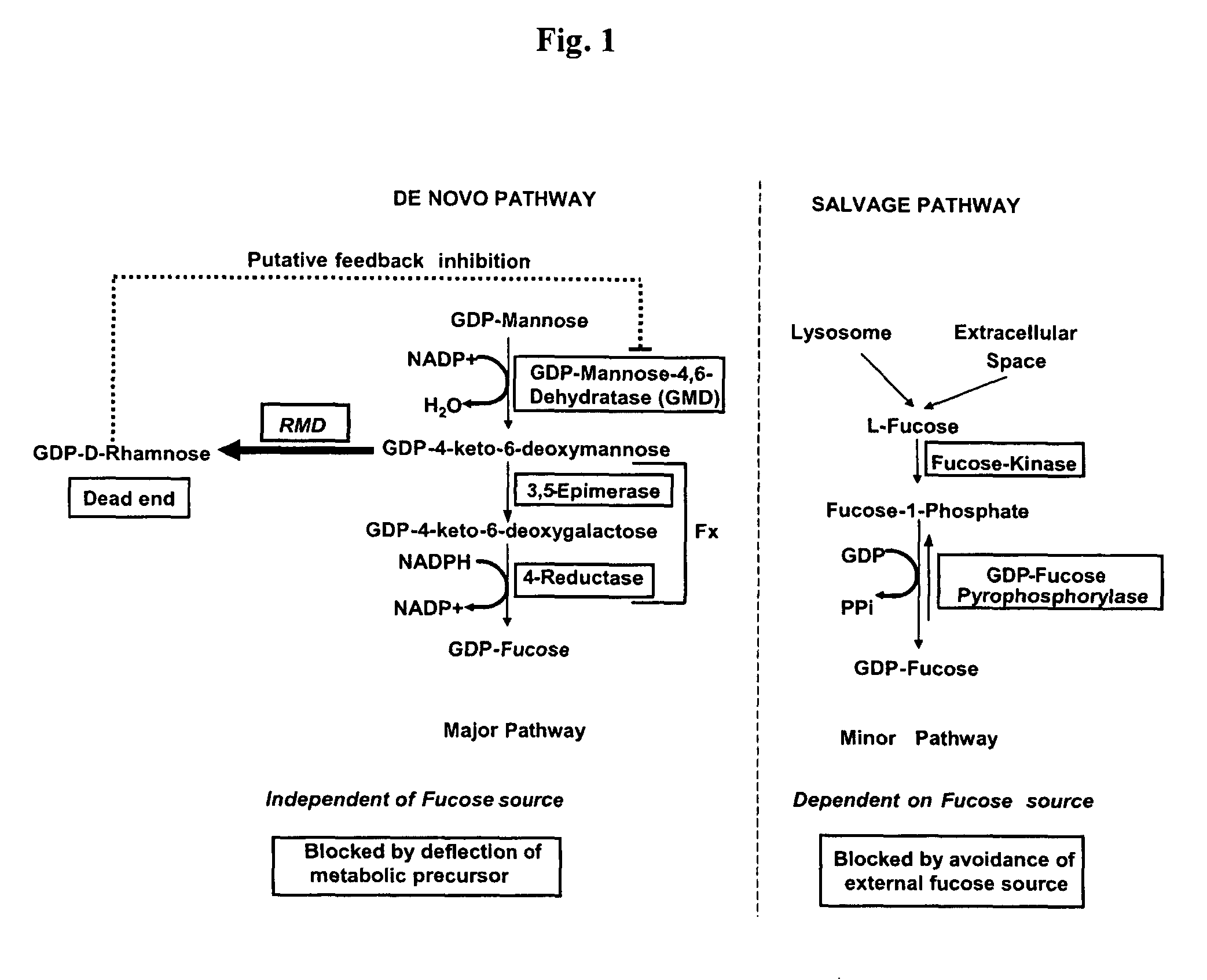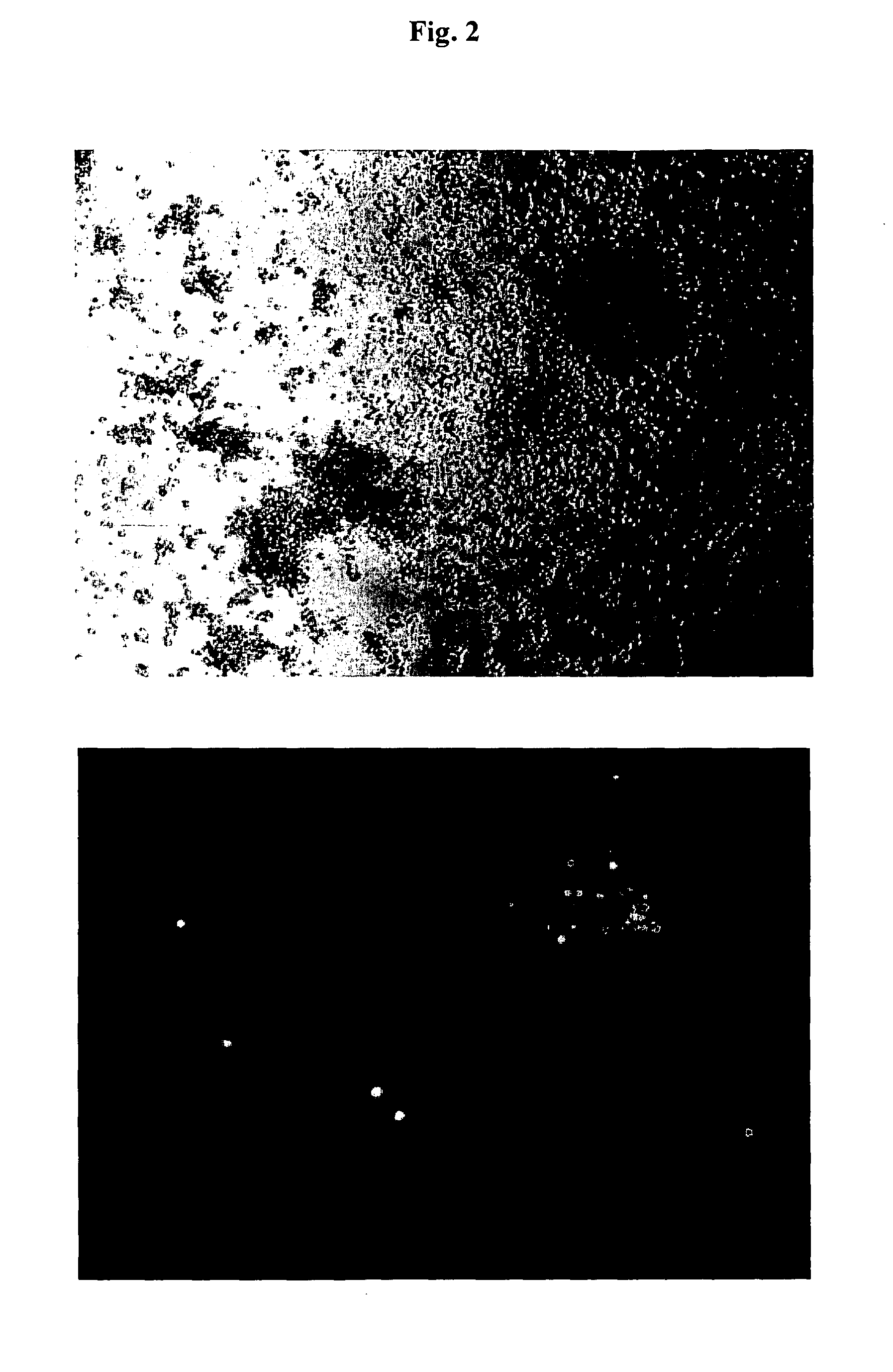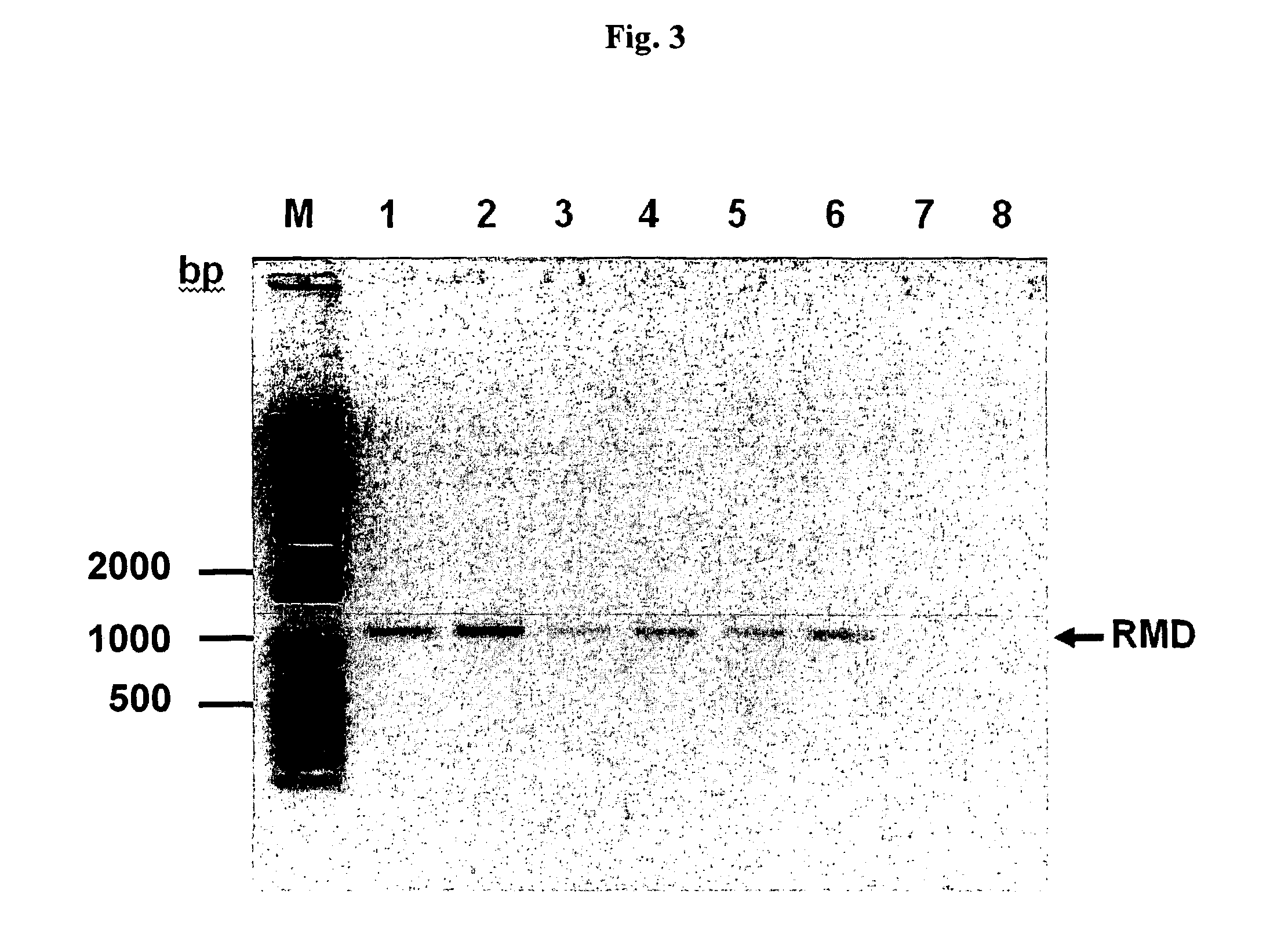Process for producing molecules containing specialized glycan structures
a technology of glycans and specialized structures, which is applied in the direction of enzymology, peptides, and enzymology, can solve the problems of inability to achieve the effect of enhancing the synthesis efficiency of glycoproteins, affecting the in vivo function of biomolecules, and requiring additional manufacturing steps, and achieving the effect of not always crowned with success, and reducing the number of steps
- Summary
- Abstract
- Description
- Claims
- Application Information
AI Technical Summary
Benefits of technology
Problems solved by technology
Method used
Image
Examples
examples
1. Experimental Part
1.1 Materials and Methods
1.1.1 Cell Lines
[0236]The recombinant CHO / DG44 cell line CHO-IgG was established earlier in our laboratory by stable transfection of the dihydrofolate reductase-deficient CHO cell line, CHO / DG44 (Urlaub et al., 1986, Proc Natl Acad Sci USA. 83 (2): 337-341) with an expression vector containing an antibody expression cassette comprising nucleotide sequences encoding light and heavy chain of a therapeutic monoclonal antibody (Trastuzumab (Herceptin®)). Generation of the cell line RMD-CHO-IgG started from the existing CHO-IgG cell line. Both cell lines were maintained in serum-free medium
1.1.2 Gene Optimization and Synthesis
[0237]The amino acid sequence for the oxidoreductase Rind (Pseudomonas aeruginosa PAO1; 304 amino acids) (GenBank Accession No. GenBank: AAG08839.1) was reverse translated and the resulting nucleotide sequence optimized by knockout of cryptic splice sites and RNA destabilizing sequence elements, optimisation for increased...
PUM
| Property | Measurement | Unit |
|---|---|---|
| pH | aaaaa | aaaaa |
| accelerating voltage | aaaaa | aaaaa |
| volume | aaaaa | aaaaa |
Abstract
Description
Claims
Application Information
 Login to View More
Login to View More - R&D
- Intellectual Property
- Life Sciences
- Materials
- Tech Scout
- Unparalleled Data Quality
- Higher Quality Content
- 60% Fewer Hallucinations
Browse by: Latest US Patents, China's latest patents, Technical Efficacy Thesaurus, Application Domain, Technology Topic, Popular Technical Reports.
© 2025 PatSnap. All rights reserved.Legal|Privacy policy|Modern Slavery Act Transparency Statement|Sitemap|About US| Contact US: help@patsnap.com



